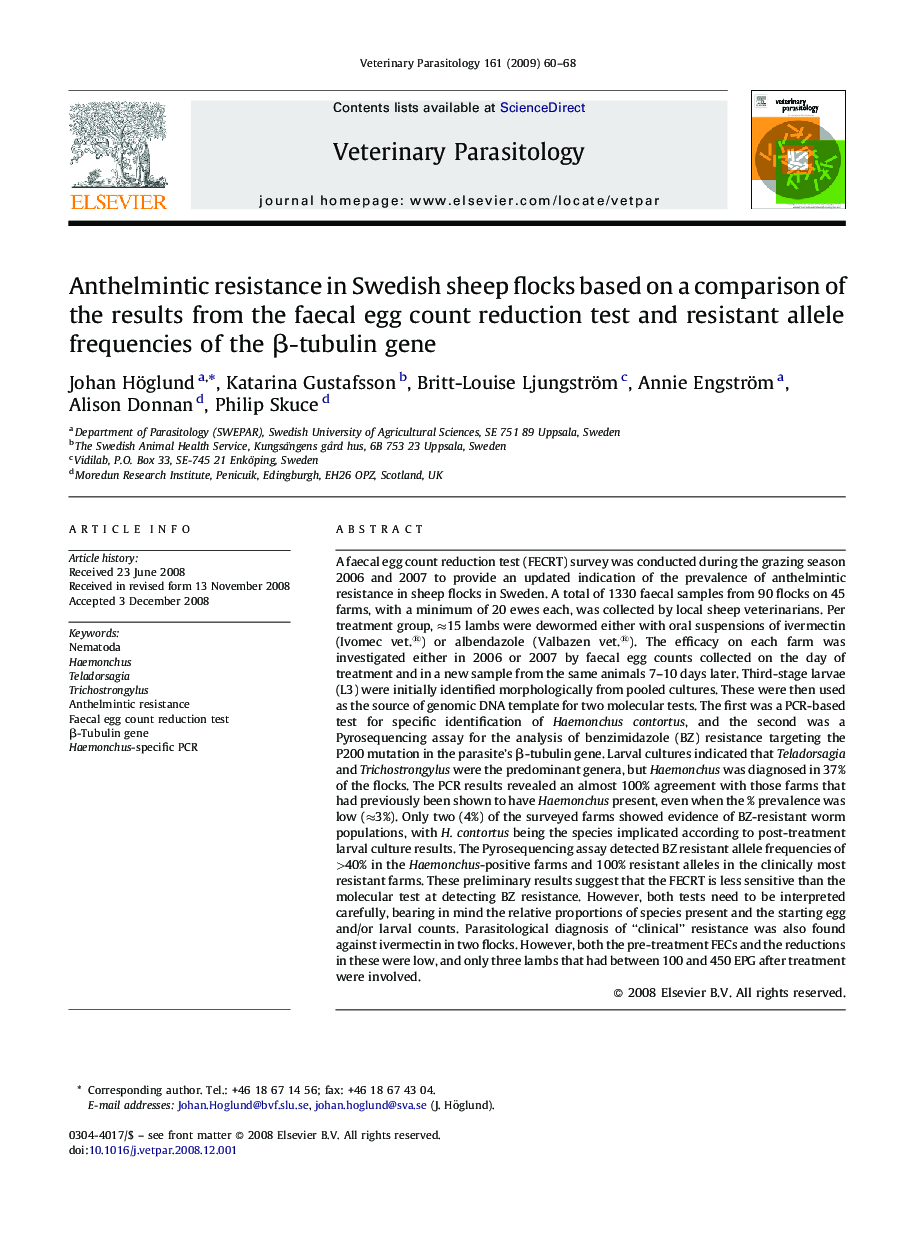| کد مقاله | کد نشریه | سال انتشار | مقاله انگلیسی | نسخه تمام متن |
|---|---|---|---|---|
| 2471108 | 1555756 | 2009 | 9 صفحه PDF | دانلود رایگان |

A faecal egg count reduction test (FECRT) survey was conducted during the grazing season 2006 and 2007 to provide an updated indication of the prevalence of anthelmintic resistance in sheep flocks in Sweden. A total of 1330 faecal samples from 90 flocks on 45 farms, with a minimum of 20 ewes each, was collected by local sheep veterinarians. Per treatment group, ≈15 lambs were dewormed either with oral suspensions of ivermectin (Ivomec vet.®) or albendazole (Valbazen vet.®). The efficacy on each farm was investigated either in 2006 or 2007 by faecal egg counts collected on the day of treatment and in a new sample from the same animals 7–10 days later. Third-stage larvae (L3) were initially identified morphologically from pooled cultures. These were then used as the source of genomic DNA template for two molecular tests. The first was a PCR-based test for specific identification of Haemonchus contortus, and the second was a Pyrosequencing assay for the analysis of benzimidazole (BZ) resistance targeting the P200 mutation in the parasite's β-tubulin gene. Larval cultures indicated that Teladorsagia and Trichostrongylus were the predominant genera, but Haemonchus was diagnosed in 37% of the flocks. The PCR results revealed an almost 100% agreement with those farms that had previously been shown to have Haemonchus present, even when the % prevalence was low (≈3%). Only two (4%) of the surveyed farms showed evidence of BZ-resistant worm populations, with H. contortus being the species implicated according to post-treatment larval culture results. The Pyrosequencing assay detected BZ resistant allele frequencies of >40% in the Haemonchus-positive farms and 100% resistant alleles in the clinically most resistant farms. These preliminary results suggest that the FECRT is less sensitive than the molecular test at detecting BZ resistance. However, both tests need to be interpreted carefully, bearing in mind the relative proportions of species present and the starting egg and/or larval counts. Parasitological diagnosis of “clinical” resistance was also found against ivermectin in two flocks. However, both the pre-treatment FECs and the reductions in these were low, and only three lambs that had between 100 and 450 EPG after treatment were involved.
Journal: Veterinary Parasitology - Volume 161, Issues 1–2, 6 April 2009, Pages 60–68